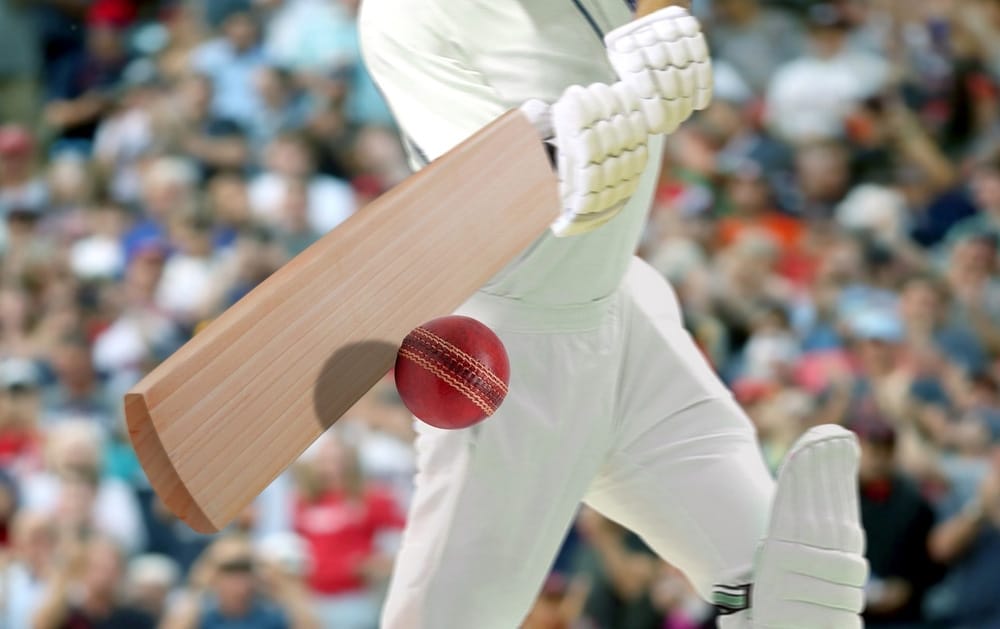Understanding Odds: A Beginner’s Guide to Cricket Betting

Cricket betting odds may seem intimidating at first glance, but with a basic understanding of the underlying principles, beginners can start betting with confidence. By deciphering the various odds formats and considering the factors influencing them, novice bettors can make informed decisions and enhance their overall betting experience.
Key Takeaways
- Cricket betting odds reflect the probability of an event occurring and are presented in various formats such as decimal, fractional, and American.
- Understanding how to calculate potential returns using different odds formats is crucial for making informed betting decisions.
- Developing a cricket betting strategy involves assessing various factors that influence odds, such as team strength and playing conditions, as well as practicing disciplined bankroll management.
Decoding Cricket Betting Odds
Understanding the Basics of Odds
In cricket betting, odds are a numerical expression of the likelihood of a particular outcome. They are the cornerstone of any betting strategy, as they determine both the potential payout and the implied probability of an event. Understanding how to read and interpret odds is fundamental to making informed bets.
Odds are created by bookmakers using probabilities and can be presented in three main formats: decimal, fractional, and moneyline. While each format displays the same underlying probabilities, they do so in different ways:
- Decimal Odds: These are straightforward and calculate the payout by multiplying the stake by the odds. For example, a $10 bet at 2.50 odds would return $25.
- Fractional Odds: Common in the UK, these represent the profit relative to the stake. A 3/1 (three-to-one) odd means you win $3 for every $1 staked.
- Moneyline Odds: Used mainly in the US, these odds can be positive or negative, indicating the amount one needs to bet to win $100 or the amount one wins for every $100 staked, respectively.
The key to successful cricket betting is not just understanding the different types of odds, but also knowing how to use them to assess the value of a bet. This involves analyzing the odds in the context of the event’s specifics, such as team form, player injuries, and weather conditions.
By comparing the odds offered by different bookmakers, bettors can identify discrepancies and potential value bets. It’s important to remember that odds are subject to change as the match approaches, and they can be influenced by market trends and betting volumes.
Comparing Different Odds Formats
When starting in the world of cricket betting, it’s essential to grasp the different odds formats offered by bookmakers. These formats include fractional, decimal, and moneyline odds, each with its unique way of presenting the potential payouts. Understanding these formats is crucial for making informed bets and can affect how you perceive the value of a wager.
In fractional odds, commonly used in the UK, the potential profit is represented as a fraction. For example, odds of 5/1 mean that for every $1 bet, you would win $5 plus your original stake back. Decimal odds, popular in online sportsbook platforms, show the total return for a $1 bet. So, odds of 6.0 would return $6, including the stake. Moneyline odds, often used in the US, can be positive or negative numbers indicating how much one needs to bet to win $100 or how much one wins on a $100 bet, respectively.
Here’s a quick comparison of how a $10 bet would pay out across different odds formats for the same event:
| Odds Format | Example Odds | Potential Payout |
| Fractional | 5/1 | $60 |
| Decimal | 6.0 | $60 |
| Moneyline | +500 | $60 |
It’s important to note that while the formats differ, they all ultimately serve the same purpose: to communicate the bookmaker’s assessment of an event’s likelihood and the corresponding returns on a bet.
Calculating Potential Returns
Calculating potential returns in cricket betting is a straightforward process. To determine your possible winnings, multiply your stake by the odds offered. This calculation gives you the total payout, which includes your original bet plus the profit. For instance, if you bet $10 at odds of 3.0, your total return would be $30 ($10 stake x 3.0 odds), with a profit of $20.
It’s essential to understand that odds reflect the probability of an event occurring as well as the potential return on a bet.
Here’s a simple table to illustrate potential returns on a $10 bet at different odds:
| Odds | Total Return | Profit |
| 2.0 | $20 | $10 |
| 3.0 | $30 | $20 |
| 4.0 | $40 | $30 |
When engaging in cricket betting, always consider the implied probability and the value of the bet. A higher odds number means a larger potential payout but also indicates a lower probability of winning. It’s crucial to balance the potential returns against the risk involved.
Strategic Insights for Cricket Betting
Assessing Factors That Influence Odds
Cricket betting odds are dynamic indicators that reflect a multitude of factors impacting the game’s outcome. Understanding these factors is crucial for any bettor looking to engage in sports betting. The odds are influenced by elements such as team strength, recent performance, playing conditions, and player injuries.
- Team Strength: A team’s track record and roster quality significantly affect the odds. Stronger teams with successful histories and prominent players are often favored, resulting in lower odds.
- Recent Form: Bettors should consider how well a team has performed in recent matches. A team in good form may have better odds than one struggling to find its rhythm.
- Playing Conditions: The pitch condition, weather, and venue can sway the odds. For example, teams familiar with local conditions may have an advantage.
- Injury Updates: Player availability can change the odds dramatically. Key player injuries might lead to higher odds for the affected team.
Betting on T20 cricket matches requires careful consideration of these factors to make informed decisions. The dynamic nature of T20 games, with their fast pace and high scoring potential, adds another layer of complexity to betting strategies.
Developing a Cricket Betting Strategy
Creating a successful cricket betting strategy involves a combination of research, analysis, and disciplined betting practices. Understanding the nuances of the game and how they translate into betting opportunities is crucial. Here are some key points to consider when developing your strategy:
- Research the Conditions: The playing conditions, including the pitch and weather, can significantly affect the outcome of a match. Analyzing these factors should be a cornerstone of your betting approach.
- In-Play Analysis: Stay vigilant during the match to exploit shifts in momentum. Quick decision-making can lead to profitable betting opportunities.
- Specialized Markets: Explore betting on specific aspects such as player performance or innings totals to find value beyond the basic match-winner bets.
- Bankroll Management: Set a budget and stick to it. Managing your funds wisely can help sustain your betting activity over the long term.
When formulating your strategy, it’s essential to adapt to the dynamic nature of cricket. Each format of the game, from Test matches to T20, presents unique challenges and opportunities for bettors.
Remember to leverage various resources, including expert predictions and statistical data, to inform your betting decisions. By doing so, you can enhance your understanding of the game and improve your chances of success.
Frequently Asked Questions
After exploring the various aspects of cricket betting, it’s natural to have questions. Below are some common inquiries from beginners:
- Where can I bet on cricket for real money? There are multiple cricket betting sites available, offering the opportunity to place bets online.
- How do bets on sporting events work? You select a game or matchup, review the odds, and wager an amount of money.
- What should I do before placing a bet? It’s crucial to read the terms and conditions (T&Cs) before agreeing to any betting arrangement.
Betting bonuses often come with conditions, such as a limited availability period and restrictions on withdrawal. Ensure you understand these terms to make informed decisions.
Remember, betting should always be done responsibly, and it’s important to set limits for yourself to prevent any potential issues related to gambling.
Conclusion
For beginners, understanding the odds is a crucial step towards making informed and potentially profitable decisions. Remember, odds are more than just numbers; they are a reflection of probabilities, potential returns, and the various factors that influence the outcome of cricket matches. Whether you prefer decimal, fractional, or American odds, the key is to approach betting with knowledge, research, and a disciplined strategy. With the insights gained from this guide, you’re now better equipped to join the thrilling world of cricket betting. Face the challenge, enjoy the process, and may your wagers bring you both enjoyment and success.
Frequently Asked Questions
How do I calculate potential winnings using decimal odds?
To calculate potential winnings using decimal odds, simply multiply your stake by the decimal odds. The result represents your total return, including the initial stake.
Are there any strategies for maximizing profits in cricket betting?
Several strategies can help maximize profits in cricket betting, such as conducting research, identifying value bets, and practicing disciplined bankroll management.
What factors should I consider when assessing cricket betting odds?
When assessing cricket betting odds, consider factors such as team strength, recent form, playing conditions, player injuries, and historical performances. These elements can significantly influence the odds and the potential outcome of a match.


